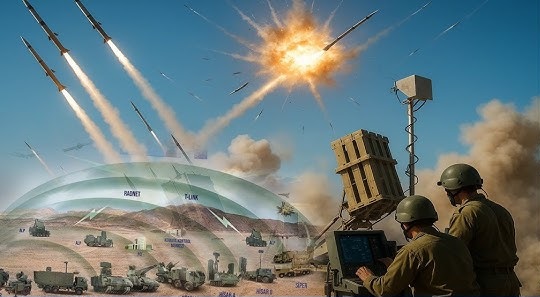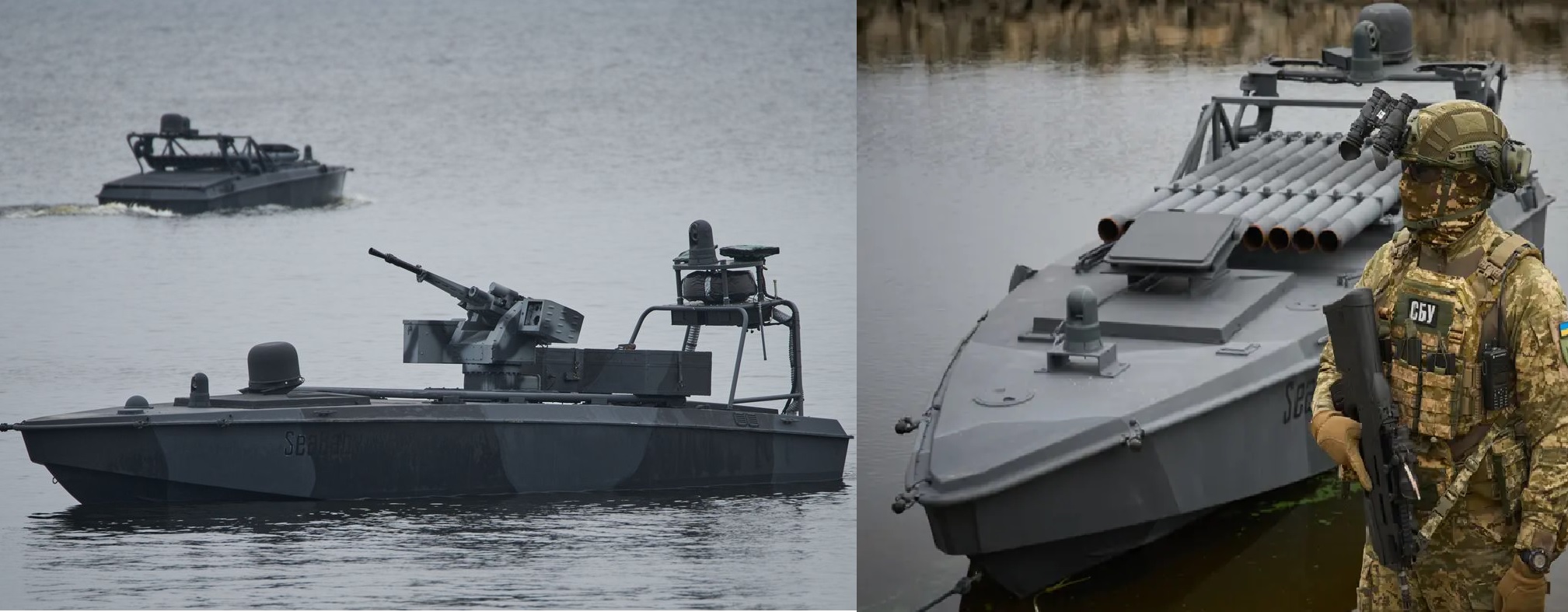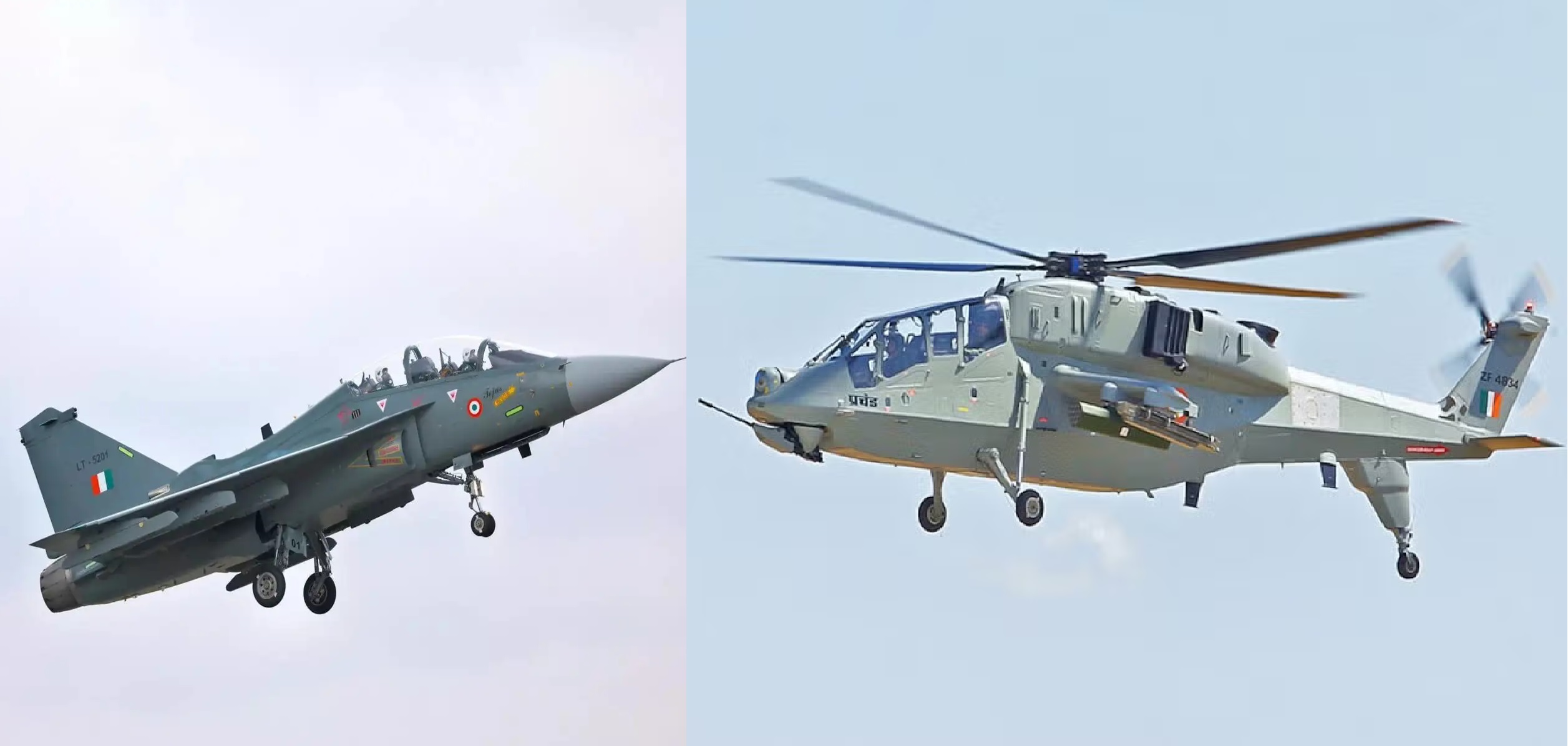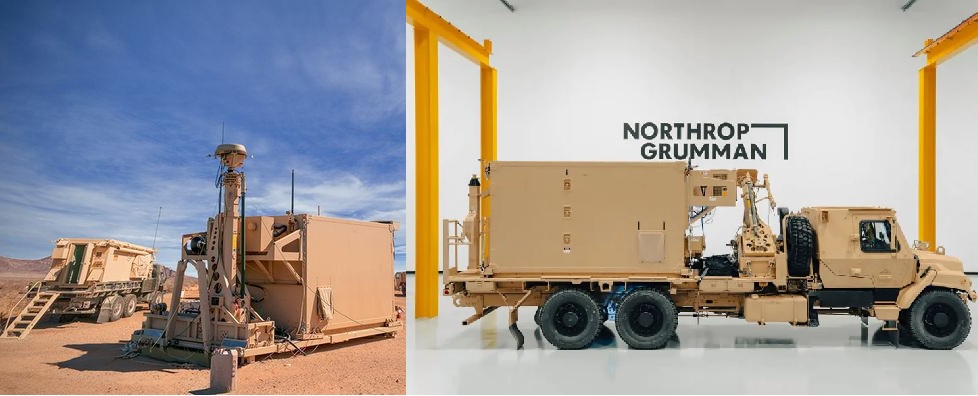World
France is set to acquire a third Electromagnetic Aircraft Launch System (EMALS) catapult track for its next-generation aircraft carrier, PA-Ng, according to the 2026 draft defence budget. The addition underscores the French Navy’s ambition to fully modernize its carrier aviation capabilities and expand operational flexibility for manned and unmanned aircraft alike. The draft budget, released last week, explicitly mentions funding for “the third catapult track and the data-centric upgrade of the Combat Management System (CMS) in its incremental development approach,” reflecting a proposal made by President Emmanuel Macron during his speech on July 13, 2025. In that address, Macron called for a substantial increase in defence spending, citing imminent global threats—particularly from Russia—and declaring, “To be free in this world, we need to be feared.” The budget outlines a planned €3.5 billion increase in 2026, followed by €3 billion in 2027. While it has long been the French Navy’s desire to operate three EMALS catapults on PA-Ng, sources suggest that the final decision will be “a political one” made at the highest level. The General Atomics-built EMALS and Advanced Arrestor Gear (AAG) systems intended for PA-Ng are being procured under a U.S. Foreign Military Sales (FMS) case. PA-Ng Programme Updates The PA-Ng programme, approved in December 2020, aims to replace the current Charles de Gaulle carrier by 2038. The Direction générale de l’armement (DGA) and MO Porte-Avions (a joint venture of Naval Group and Chantiers de l’Atlantique) have completed the preliminary and system design phases, while TechnicAtome, under the Commissariat à l’énergie atomique, is responsible for the nuclear propulsion plant featuring two K-22 pressurised water reactors. The latest design of PA-Ng envisions: Displacement: 78,000 tonnes Length: 310 metres, Beam: 90 metres Air Group: 30 combat aircraft plus other fixed-wing and rotary aircraft Key Features: Ship-wide electrification, integrated island superstructure, three EMALS tracks, three-wire AAG recovery system, two hangars, and two deck-edge elevators capable of lifting 40 tonnes each Assembly is scheduled to start at Chantiers de l’Atlantique in St Nazaire in 2032, with final outfitting at Toulon by 2035, followed by sea trials in 2036. In April 2024, the DGA placed €600 million orders for critical path components, including nuclear reactor vessels and secondary steam plant equipment. EMALS Catapults: Enhancing Carrier Capabilities The Electromagnetic Aircraft Launch System represents a significant technological leap over traditional steam catapults. Unlike steam systems that rely on pressurized pistons, EMALS uses linear induction motors to accelerate aircraft along the flight deck. This allows: Precise launch control, reducing stress on airframes Higher maximum take-off weight, enabling heavier payloads Rapid adaptation for multiple aircraft types, including manned fighters and UCAVs Lower maintenance requirements compared to steam catapults The EMALS system is paired with a three-wire Advanced Arrestor Gear (AAG), which provides controlled deceleration for landing aircraft. Together, these systems dramatically increase sortie rates and operational efficiency, particularly for heavy or next-generation aircraft such as the Rafale and unmanned combat aerial vehicles. Speaking at the Navy Leaders CNE 2025 event in Farnborough, Captain Thibault Lavernhe, Marine Nationale programme officer, noted: “We have recently started a campaign at Lakehurst in the U.S. to test the compatibility between Rafale aircraft and the American launch and recovery equipment. This is a big step forward and will allow several tonnes more maximum take-off weight than on Charles de Gaulle.” He added that the two forward EMALS tracks are specifically designed to operate UCAVs alongside manned aircraft, which require different launch procedures, ensuring PA-Ng is future-proofed for next-generation carrier aviation. Infrastructure and Build Timeline Preparatory work for PA-Ng’s docking and construction infrastructure began in 2025, with studies covering civil engineering, dredging, and dry dock construction. The 2026 budget will continue funding these initiatives, enabling seamless integration of the EMALS and AAG systems during the carrier’s construction phase. With the addition of a third EMALS track, PA-Ng is positioned to deliver unprecedented operational flexibility for the French Navy, supporting a range of modern aircraft, from heavy fighters to autonomous drones, while demonstrating France’s commitment to maintaining global maritime influence.
Read More → Posted on 2025-10-23 15:20:12World
The U.S. Army has officially selected AeroVironment’s Freedom Eagle FE-1 as its Next-Generation Counter-UAS (Unmanned Aerial System) Missile, under a $95.9 million contract awarded through the Long-Range Kinetic Interceptor (LRKI) program. The decision marks a major milestone in America’s effort to strengthen its layered air defense network against the rapidly growing threat of enemy drones. Freedom Eagle FE-1 Drone Defense Announced on October 22, 2025, AeroVironment confirmed that the Freedom Eagle FE-1 will serve as a low-cost interceptor designed specifically to destroy Group 2 and Group 3 drones, which include medium- to large-sized unmanned aircraft capable of carrying explosives or surveillance payloads. The contract was awarded through the Army Combat Capabilities Development Command Aviation and Missile Center (CCDC AvMC) using the Aviation and Missile Technology Consortium (AMTC) — a program that allows the Army to fast-track priority technologies and rapidly field them. According to AeroVironment, production of the FE-1 will begin immediately, with deliveries planned to start within the next year. How the Freedom Eagle FE-1 Works The Freedom Eagle FE-1 is a kinetic interceptor missile, meaning it physically destroys its target through direct impact rather than explosive fragmentation. It uses a dual-thrust solid rocket motor that provides high acceleration and maneuverability, allowing it to engage fast-moving drones at varying altitudes and speeds. The missile is equipped with an advanced electro-optical and infrared seeker that can autonomously track drones even under heavy electronic interference. Once launched, the FE-1 locks onto the target and adjusts its trajectory in real-time to ensure a kill. Its modular design means the missile can be integrated with multiple launch platforms — from mobile ground vehicles and fixed-base systems to potentially shipborne launchers in the future. Unlike larger surface-to-air missiles that cost millions of dollars each, the FE-1 is compact, affordable, and designed for mass production — making it ideal for countering swarm attacks. Specifications and Capabilities While many of the missile’s specifications remain classified, available information indicates the following: Type: Short-to-medium range Counter-UAS interceptor Target Classes: Group 2 and Group 3 drones (and smaller Group 1 threats) Propulsion: Dual-thrust solid rocket motor Range: Estimated 10–15 km (unconfirmed) Guidance: Multi-mode seeker (electro-optical/infrared) Warhead: Kinetic impact with proximity-fuse option Launch Platforms: Mobile, fixed, and networked C-UAS systems Estimated Unit Cost: Under $200,000 per missile The missile’s low size, weight, and power (SWaP) profile allows it to be easily deployed in forward areas or mounted on lightweight tactical vehicles. This combination of affordability and agility gives the Army a scalable solution to rapidly neutralize multiple drone threats without depleting expensive missile stockpiles. Why the FE-1 Matters The selection of the Freedom Eagle FE-1 reflects the Army’s urgent focus on layered air defense — combining radar, electronic warfare, directed-energy weapons (like lasers), and kinetic interceptors to cover all threat levels. Small and medium drones have become a serious problem on modern battlefields, especially after being used in large numbers in Ukraine and the Middle East, where they have targeted armored vehicles, artillery, and logistics hubs. High-end missile systems like the Patriot or NASAMS are too expensive to waste on small drones. The FE-1 fills this crucial gap — a fast, affordable interceptor that can be deployed in large numbers against drone swarms. AeroVironment’s Expanding Role AeroVironment, long known for its Switchblade loitering munitions and small unmanned aircraft systems, is now moving deeper into the missile defense market. “The Freedom Eagle FE-1 represents a major step forward in defending U.S. forces from emerging aerial threats,” the company said in a statement. “It combines affordability, precision, and scalability — key elements in the future of air defense.” By securing the FE-1 contract, AeroVironment joins a select group of defense manufacturers providing front-line counter-drone weapons for the U.S. military. This also diversifies the Pentagon’s supplier base at a time when demand for interceptors and drone-defense systems is skyrocketing. Strategic Significance The FE-1’s induction into the Army’s arsenal will bolster defenses across bases, forward operating positions, and high-value infrastructure. It also forms a bridge between small anti-drone systems (guns, lasers, RF jammers) and larger missile systems (such as Stinger or AIM-9X variants). Experts note that a key feature of the LRKI program is “mass over cost” — the ability to deploy hundreds of interceptors without exhausting resources. This philosophy represents a shift toward attritable defense systems, where both the interceptor and the target are expendable. In coming years, the FE-1 could become a standard interceptor not only for U.S. Army bases but also for allied forces seeking affordable, effective drone defense.
Read More → Posted on 2025-10-23 14:01:10World
Hanwha Ocean has officially launched the Republic of Korea Navy’s (ROKN) first Dosan Ahn Chang-ho-class (KSS-III) Batch-II attack submarine, marking a significant milestone in South Korea’s drive to independently design, build, and operate advanced undersea vessels. The ROKS Jang Yeong-sil (SS-087) was inaugurated at Hanwha’s shipyard in Geoje-si, Gyeongsang Province, with top military and defense officials in attendance. The 3,600-ton diesel-electric submarine reflects Seoul’s commitment to strengthening maritime security amid rising regional tensions in East Asia. The vessel is expected to enhance South Korea’s ability to monitor, deter, and, if necessary, respond to threats across the Korean Peninsula and surrounding seas. The navy plans to conduct rigorous testing and evaluation before formally commissioning the submarine into service in late 2027. Advanced Power, Stealth, and Range Compared to its KSS-III Batch-I predecessors, the Jang Yeong-sil offers substantial improvements in operational endurance and survivability. A key upgrade is its lithium-ion battery system, which allows the submarine to remain submerged longer, operate at higher speeds, and reduce the likelihood of detection by enemy forces. The vessel’s advanced sonar and combat systems provide more precise tracking and targeting of both surface ships and land targets. Its auxiliary propulsion system ensures the submarine can maneuver even if the main propeller becomes disabled, significantly enhancing safety during extended missions. Additionally, integrated noise and vibration reduction technologies improve stealth capabilities, making it more difficult for adversaries to detect the submarine in contested waters. Specifications and Capabilities The KSS-III Batch-II submarine, built entirely with domestic South Korean technology and components, measures 89 meters (292 feet) in length with a 10-meter (33-foot) beam. The vessel can reach speeds of up to 20 knots (37 km/h; 23 mph) and operate continuously for approximately 10,000 nautical miles (18,520 km; 11,508 mi) without surfacing. These capabilities enable missions lasting more than 20 days underwater, providing the navy with persistent and flexible undersea operations. The submarine carries a crew of around 50 personnel and is armed with a versatile weapons suite, including submarine-launched ballistic missiles (SLBMs) and land-attack cruise missiles (LACMs). This armament significantly strengthens South Korea’s undersea strike and deterrence capabilities, particularly in the context of regional security challenges posed by North Korea and other potential adversaries. Strategic Implications The launch of the ROKS Jang Yeong-sil underscores South Korea’s ambition to maintain a technologically sophisticated undersea fleet, reducing reliance on foreign defense systems while advancing indigenous naval innovation. Seoul plans to commission a total of up to nine KSS-III submarines through the 2030s, with three Batch-I units already integrated into the fleet between 2021 and 2024. With the Batch-II variant, the Republic of Korea Navy not only increases its underwater operational reach but also demonstrates the growing maturity of South Korea’s defense-industrial base. The combination of extended endurance, stealth technologies, and strategic missile capabilities positions the KSS-III Batch-II as a cornerstone of South Korea’s modern naval deterrence strategy, capable of addressing both conventional and emerging maritime threats.
Read More → Posted on 2025-10-23 13:47:05World
Kongsberg Defence & Aerospace and Thales have taken a clear step toward delivering an Australian land‑based long‑range strike capability: the two companies today announced the successful live‑firing of a Naval Strike Missile (NSM) test munition from the StrikeMaster missile launch vehicle during trials in Norway. The firing used a blast test vehicle to replicate the launch environment and—critically—confirmed that Thales Australia’s Bushmaster Utility variant can act as a safe, reliable launch platform for the NSM without major modification. The strike validates StrikeMaster as a low‑risk, mobile solution that could meet Australia’s need for distributed, land‑based long-range fires. Why this matters For Canberra, the announcement matters for three reasons. First, a vehicle‑portable NSM launcher gives the Australian Defence Force (ADF) a highly mobile, survivable way to conduct anti‑ship and land‑attack missions from dispersed coastal and inland positions—an operational attribute the ADF has prioritized for the Indo‑Pacific. Second, using an already‑proven platform such as the Bushmaster Utility variant reduces programmatic and integration risk compared with building a bespoke launcher from scratch; the StrikeMaster concept therefore shortens the pathway from concept to fielding. Third, this live‑fire in Norway comes at a moment when Australia is investing in domestic guided‑weapons production in partnership with Kongsberg—moves intended to accelerate delivery and sovereign sustainment of long‑range strike systems. What the NSM brings to the fight The Naval Strike Missile (NSM) is a modern, fifth‑generation cruise missile built to penetrate layered defences and operate in complex littoral environments. Kongsberg describes the NSM as a high‑subsonic, stealth-shaped missile roughly 3.96 m in length and weighing about 407 kg with a range in excess of 300 km (depending on baseline and booster). It uses an imaging‑infrared seeker and an onboard target database that supports autonomous target recognition and discrimination; flight modes include sea‑skimming approaches and terminal manoeuvres to complicate interception. The warhead is a titanium‑cased multipurpose blast/fragmentation design optimized for both ship and land targets. Those performance and guidance characteristics make NSM suitable for both maritime strike and precision land attack against heavily defended targets. Operational context and users The NSM has seen growing international uptake—Kongsberg’s missile is already in service or selected by a number of countries and is being delivered to allies including Norway, the United States, the United Kingdom, Canada and Australia, among others. It is deployable from ships and, crucially for StrikeMaster, can be fielded from trucks as part of coastal‑defence or land‑based strike systems without requiring substantive modification to the missile itself—an interoperability and logistics advantage for export customers and for integrated allied operations. The U.S. Marine Corps and Poland, for example, are already operating land‑based NSM configurations. Technical and programmatic takeaways The live‑fire used a blast test vehicle to demonstrate safe separation, ignition and initial flight characteristics from a land‑mounted launcher—procedures that are among the most hazardous and technically demanding parts of launcher integration. That the test succeeded with Thales’ Bushmaster Utility variant speaks to the vehicle’s load‑carriage and electromagnetic/mechanical integration readiness, and it gives both defence planners and acquisition managers more confidence that StrikeMaster could be scaled for ADF use with manageable schedule and cost risk. The joint demonstrations by Kongsberg and Thales also dovetail with Australia’s earlier announcements on co‑manufacture and sovereign missile production, pointing toward a future where missiles might be produced locally while launch systems are integrated onto Australian vehicles. Limits and next stepsA single live‑firing proves crucial integration points, but it’s not the end of development. Formal operational assessment will require repeated launches, testing across different environmental conditions, integrated sensor‑to‑shooter trials, and doctrine and logistics planning for sustained fielding. Export and industrial arrangements will also shape timelines: co‑production or local assembly programmes (and their associated licensing, training and sustainment packages) will determine how quickly StrikeMaster‑equipped NSMs could enter permanent ADF inventories. The StrikeMaster live‑fire represents a practical, low‑risk pathway to give Australia a mobile, land‑based long‑range strike capability using a proven missile design. By demonstrating safe launch from the Thales Bushmaster Utility variant, Kongsberg and Thales have reduced a major integration unknown—an important step for Australia’s plans to deploy distributed long‑range fires in the Indo‑Pacific and for the broader coalition of NSM operators seeking flexible, truck‑mounted strike options.
Read More → Posted on 2025-10-23 13:34:13India
India is on the verge of a major technological leap in its cruise missile program as the Defence Research and Development Organisation (DRDO) conducts final rounds of testing for an 800-kilometer range variant of the BrahMos—the world’s fastest operational supersonic cruise missile. According to The Times of India report dated October 20, 2025, the enhanced-range version will feature a modified indigenously developed liquid-fuel ramjet engine, a key step toward full self-reliance in one of India’s most complex weapons systems. Sources cited by ToI revealed that the 800-km variant is “more or less developed” and undergoing final tests to validate the performance of its improved ramjet propulsion and hybrid navigation system, which combines an internal inertial navigation system (INS) with external global navigation satellite systems (GNSS). These refinements are designed to ensure higher accuracy, greater resilience, and resistance to jamming—an essential capability in modern electronic warfare environments. From 280 km to 800 km: The Evolution of BrahMos The BrahMos missile—named after the Brahmaputra and Moskva rivers—was initially restricted to a 280-km range to comply with the Missile Technology Control Regime (MTCR) before India became a member in 2016. Following this, DRDO and BrahMos Aerospace began gradually extending the missile’s range. At Aero India 2017, then-DRDO chief Dr. S. Christopher announced the first extended-range version, capable of reaching 450 km, achieved by tweaking the flight trajectory and allowing the missile to cruise at higher altitudes. He also hinted at an 800-km variant, stating it could be realized within two and a half years. A BrahMos official at the time confirmed that the increased range was achieved without changing the missile’s dimensions, instead using lighter composite materials and optimized fuel management to improve engine efficiency. Developments on the Road to 800 km Several key milestones paved the way for this extended-range BrahMos: May 2018: DRDO tested BrahMos with non-metallic airframe components and a new indigenous fuel management system, crucial for range enhancement. September 2020: The organization successfully flight-tested a BrahMos featuring a fully indigenous booster and airframe section, a major “Make in India” breakthrough. July 2021 (MAKS Air Show, Russia): Russian defense sources confirmed that an 800-km BrahMos was under joint development with new components, particularly an upgraded booster for greater launch energy. By 2021, DRDO had successfully indigenized major sub-systems of the missile, including the ramjet fuel tank, airframe, and pneumatic fuel supply systems. The final missing piece—an Indian-built ramjet engine—was under accelerated development. The Indigenous Ramjet Engine: India’s Technological Leap Initially, all BrahMos missiles were powered by Russian-made liquid-fuel ramjet engines produced at the Orenburg plant. However, in the last decade, DRDO’s Defence Research and Development Laboratory (DRDL) and BrahMos Aerospace embarked on an ambitious mission to replicate—and then improve—this technology domestically. By 2021, India achieved full indigenization of the Russian LFRJ (Liquid Fuel Ramjet). In June 2024, BrahMos Aerospace CEO Atul Dinkar Rane confirmed that DRDO was prioritizing ramjet engine advancement, emphasizing that the achievement would significantly reduce per-unit missile costs while increasing reliability and performance control. In May 2024, DRDO’s Defence Materials and Stores Research and Development Establishment (DMSRDE) achieved a crucial milestone by developing a new generation of liquid ramjet fuel in partnership with BPCL and Mineral Oil Corporation Pvt Ltd. The fuel was successfully tested on a Ramjet Test Bed at DRDL, confirming India’s ability to independently design and sustain the propulsion ecosystem of the BrahMos family. What Enables the 800-km Range? Analysts point to a combination of engineering refinements that have nearly doubled BrahMos’s reach: Weight Reduction: Use of advanced carbon fiber composites and non-metallic airframe materials reduced structural weight, enabling more fuel storage without altering external dimensions. Improved Booster: A more efficient solid-fuel booster stage that accelerates the missile to higher Mach speeds before the ramjet ignites. Optimized Ramjet: The new liquid-fuel ramjet design offers better combustion efficiency and sustained thrust, allowing the missile to maintain speeds above Mach 3 for longer durations. Enhanced Fuel Composition: The newly developed indigenous liquid fuel ensures higher energy density and thermal stability, crucial for long-endurance supersonic flight. Integrated Navigation System: The INS-GNSS hybrid system ensures precise target tracking even in GPS-denied or jamming-heavy environments. These enhancements make the 800-km BrahMos capable of striking deep strategic targets across mountain ranges or naval formations from standoff distances—without compromising accuracy or speed. Strategic Implications Once operational, the 800-km BrahMos will redefine India’s conventional deterrence capability. For land-based and ship-launched variants, it means the ability to strike farther inside enemy territory, including hardened bunkers, command centers, and airbases. For the BrahMos-A (air-launched) version, the extended range will allow Indian Su-30MKI fighters to launch missiles from within Indian airspace, hitting high-value targets deep within adversarial regions. This range expansion aligns with India’s goal of achieving full autonomy in missile propulsion, reducing dependency on Russia amid shifting geopolitical equations. Old Russian-Made vs. Indian-Made BrahMos Ramjet: The Key Differences Feature Russian-Made Ramjet Indian-Made Ramjet Origin Manufactured in Orenburg, Russia Fully developed and produced by DRDO & Indian industry Fuel Type Russia Conventional kerosene-based liquid fuel Advanced indigenous liquid ramjet fuel (higher efficiency) Material Composition Predominantly metallic structure Composite + metallic hybrid (lighter and stronger) Efficiency High thrust, moderate fuel efficiency Optimized thrust-to-weight ratio and higher combustion efficiency Range Capability ~450 km max Up to 800 km with improved endurance Maintenance & Cost Imported components, higher cost Lower cost, domestic supply chain Control & Customization Limited by Russian design parameters Fully modifiable for Indian operational needs Integration Partly dependent on Russian testing Integrated with DRDO’s indigenous fuel, booster, and guidance systems In essence, the Indian-made ramjet engine is not just a copy of the Russian design—it’s an evolution. It combines lighter materials, superior fuel chemistry, and enhanced thermal management to deliver nearly double the range and better mission flexibility. The upcoming 800-km BrahMos marks a decisive milestone in India’s missile modernization journey. What began as a joint Indo-Russian venture two decades ago is now transforming into a largely indigenous weapon ecosystem, driven by DRDO’s innovation and India’s industrial base. With testing almost complete, the extended-range BrahMos is expected to enter service within the next two years, strengthening India’s position among the few nations capable of designing, producing, and fielding advanced supersonic cruise missiles with complete domestic propulsion technology—a true testament to India’s growing defense self-reliance.
Read More → Posted on 2025-10-23 12:43:16World
In a bold and defiant statement, Venezuelan President Nicolás Maduro has declared that his country possesses 5,000 Russian-made anti-aircraft missiles ready to defend its skies against any potential U.S. aggression. The warning was directed at former U.S. President Donald Trump, whom Maduro accused of plotting military actions against Venezuela during his tenure. Venezuela’s Massive Missile Arsenal During a televised address from Caracas, Maduro said, “Any military power in the world knows the strength of the Russian Igla-S system — and Venezuela has no less than 5,000 of them deployed to protect our homeland.” The Igla-S, known by NATO as the SA-24 Grinch, is a man-portable air-defense system (MANPADS) capable of targeting low-flying aircraft, helicopters, and drones. These missiles are compact yet deadly, with an effective range of about 6 kilometers and the ability to engage targets at altitudes of up to 3,500 meters. According to defense analysts, if Venezuela truly has 5,000 operational Igla-S missiles, that represents one of the largest MANPADS inventories in the Western Hemisphere—a staggering number that could pose serious challenges to any aerial campaign. A Strategic Message to Washington Maduro’s comments come amid renewed tensions between Caracas and Washington. The Venezuelan leader accused the United States of maintaining a “hostile military posture” in the Caribbean, pointing to U.S. naval activity near Venezuelan waters under the pretext of anti-narcotics operations. He warned that Venezuela is “fully prepared” for any attempt to violate its sovereignty, emphasizing that the deployment of Russian systems forms part of a wider defensive alliance with Moscow. The statement also serves a domestic purpose—portraying Maduro as a strong leader standing firm against U.S. “imperialism.” Since 2019, Venezuela has faced crippling sanctions and international isolation, with the U.S. recognizing opposition leader Juan Guaidó as the legitimate president. Maduro’s rhetoric of resistance has been central to his political survival. The Russian Connection Venezuela’s missile stockpile traces back to a defense cooperation pact with Russia signed in the 2000s under Hugo Chávez. Over the years, Caracas has purchased fighter jets, tanks, and surface-to-air systems from Moscow, making Venezuela one of Russia’s most important military partners in Latin America. The Igla-S systems were part of these deals, reportedly delivered between 2009 and 2012. Russia also helped Venezuela establish local maintenance facilities and train personnel, further cementing the partnership. Analysts believe Moscow continues to supply technical support, ensuring the missiles remain serviceable—a sign of Russia’s strategic intent to maintain influence in the Americas. Why 5,000 Missiles Is a Huge Number If the claim is accurate, Venezuela’s 5,000 anti-aircraft missiles represent a formidable defensive grid. To put this in perspective: Most medium-sized countries operate only a few hundred MANPADS at most. A network of thousands would allow Venezuela to defend air bases, coastal zones, oil refineries, and urban centers simultaneously. The sheer quantity creates a deterrent effect, as any low-flying aircraft or helicopter entering Venezuelan airspace could face an unpredictable threat. However, experts caution that the effectiveness of these systems depends heavily on training, maintenance, and command control. Many of the missiles may be in storage or require servicing, and Venezuela’s economic crisis raises questions about the readiness of its arsenal. Implications for U.S.-Venezuela Relations Maduro’s warning to Trump, even years after his presidency, carries symbolic weight. Trump’s administration openly discussed possible military options against Venezuela, including a naval blockade and CIA covert operations. By invoking the image of 5,000 ready-to-fire Russian missiles, Maduro seeks to deter future U.S. intervention and remind Washington that Venezuela is not an easy target. It also reinforces Russia’s message to the West that it can project power in the Western Hemisphere through its allies. For the United States, the statement may not signal an immediate threat but highlights the growing reach of Russian arms influence across Latin America — a development that complicates U.S. strategic interests in the region. The Bigger Picture The timing of Maduro’s statement aligns with deepening global polarization. As the U.S. and its allies support Ukraine against Russia, Moscow continues to cultivate partners in regions long considered America’s backyard. Venezuela, isolated and sanctioned, finds in Russia both a supplier and a political shield. Maduro’s message is clear: Venezuela is aligned with Moscow, armed with Russian technology, and ready to defend its sovereignty. Whether or not all 5,000 missiles are fully operational, the announcement has already achieved its purpose — reminding the world that Venezuela remains defiant, armed, and unyielding.
Read More → Posted on 2025-10-23 12:01:13India
In a sweeping move that underscores India’s accelerating push toward military modernisation and self-reliance, the Defence Acquisition Council (DAC), chaired by Defence Minister Rajnath Singh, has granted Acceptance of Necessity (AoN) for defence procurement proposals worth nearly ₹79,000 crore (approximately $9 billion). The approvals, announced on October 23, 2025, cover a broad range of critical systems for the Army, Navy, and Air Force, reflecting a comprehensive vision of capability enhancement across land, sea, and air. The clearances, primarily under the Buy (Indian-IDDM) category, place strong emphasis on indigenous production and technology development, aligning with the ‘Aatmanirbhar Bharat’ initiative aimed at reducing import dependency in defence equipment. Army Gets a Firepower and Mobility Boost For the Indian Army, the DAC approvals represent a significant upgrade in both offensive and support capabilities. Among the headline systems cleared is the Nag Mk-2 Missile and its tracked launcher system, part of the Nag Missile System (NAMIS) program. This advanced anti-tank guided missile is designed to neutralize heavily armoured enemy targets and fortified bunkers with pinpoint precision. The Nag Mk-2 is expected to feature improved range, better target acquisition, and enhanced seeker technology, offering superior lethality against modern battle tanks. Accompanying this is the approval of the Ground-Based Mobile Electronic Intelligence System (GBMES) — a high-end electronic warfare asset designed to intercept, locate, and analyse enemy radar and communication signals. This will significantly improve the Army’s situational awareness and electronic battlefield dominance. To bolster logistics and mobility in high-altitude and rough terrain operations, the Army will also induct High Mobility Vehicles (HMVs) equipped with Material Handling Cranes, enabling faster movement of heavy equipment and supplies to forward areas. Collectively, these systems will enhance the Army’s ability to fight smarter and move faster in a contested environment. Navy’s Blue-Water Ambitions Strengthened The Indian Navy has emerged as a major beneficiary of this DAC meeting, with multiple high-value clearances aimed at strengthening its operational depth and amphibious warfare capabilities. The most notable is the approval for Landing Platform Docks (LPDs) — large amphibious assault ships capable of transporting troops, armoured vehicles, and helicopters for beach landings and island operations. The LPDs will serve as a crucial element in India’s future expeditionary and humanitarian missions, enhancing the Navy’s reach across the Indian Ocean Region (IOR). Complementing this is the green light for the Advanced Light Weight Torpedo (ALWT), an indigenous anti-submarine weapon developed by DRDO’s Naval Science and Technological Laboratory (NSTL). Designed for deployment from surface ships, helicopters, and submarines, the ALWT can engage enemy submarines with high precision in both shallow and deep waters. Additionally, the Navy will procure the 30mm Naval Surface Gun (NSG) for patrol vessels and corvettes, and integrate Electro-Optical Infrared (EO/IR) Search and Track Systems along with Smart Ammunition for its 76mm Super Rapid Gun Mounts. These systems are tailored to improve maritime surveillance, counter asymmetric threats, and enhance surface engagement capabilities. Together, these acquisitions represent a substantial leap toward India’s vision of a robust, technologically advanced blue-water navy capable of securing national and regional maritime interests. Air Force Focuses on Autonomy and Precision The Indian Air Force (IAF), too, is set to benefit from cutting-edge technology with the approval of the Collaborative Long-Range Target Saturation/Destruction System (CLRTS/DS). This futuristic weapon system combines autonomy, networked coordination, and long-range strike capability — allowing multiple platforms to work collaboratively to overwhelm enemy defences. The CLRTS/DS represents India’s gradual shift toward autonomous and swarm-based strike systems, marking an important step in adapting to new-generation warfare dominated by drones, unmanned combat systems, and AI-driven targeting solutions. While details on additional IAF procurements were not fully disclosed, the overall focus remains clear: enhancing precision, survivability, and network-centric warfare capabilities across all operational domains. Aatmanirbhar Bharat at the Core A key highlight of this ₹79,000 crore push is its commitment to indigenisation. Nearly all the approved systems will be developed, manufactured, or integrated in India — either through DRDO, DPSUs, or private Indian defence firms. The government aims to ensure that these projects generate employment, boost local supply chains, and nurture a globally competitive defence industrial base. The Advanced Light Weight Torpedo and Nag Mk-2 Missile are shining examples of indigenous innovation, both developed under the DRDO umbrella, while the LPDs are expected to involve major Indian shipyards such as L&T or Cochin Shipyard Limited. Strategic and Regional Implications The DAC’s approvals come at a time of rising tensions along India’s borders and a rapidly evolving maritime landscape in the Indo-Pacific. The mix of offensive and defensive platforms reflects India’s recognition of the need for multi-domain readiness — from the icy heights of the Himalayas to the depths of the Indian Ocean. For the Army, the Nag Mk-2 and NAMIS strengthen deterrence against armoured threats from across borders. For the Navy, LPDs and ALWTs enhance maritime mobility, power projection, and anti-submarine defence. For the Air Force, autonomous strike systems like CLRTS/DS prepare India for the next generation of high-tech warfare. Collectively, these acquisitions signal India’s intent to evolve from a regional power into a self-reliant, high-technology defence ecosystem capable of defending its interests and supporting partners in the region. Challenges Ahead While the approvals mark a significant milestone, implementation remains the true test. Historically, India’s defence procurement programs have faced delays due to bureaucratic hurdles, budget constraints, and technological challenges. Timely execution, industrial coordination, and clear accountability will be crucial to ensure that the ₹79,000 crore investment translates into tangible battlefield advantage. The DAC’s clearance of nearly ₹79,000 crore worth of proposals marks one of the most significant defence modernisation waves in recent years. By empowering all three services with a balanced mix of firepower, mobility, and intelligence systems — and ensuring that most of it is indigenously produced — India is laying the foundation for a new era of strategic autonomy. If these projects proceed as planned, they will not only strengthen India’s defence posture but also transform its defence industrial base into one of the most dynamic in the world — turning vision into capability and policy into power.
Read More → Posted on 2025-10-23 11:51:17World
Russia has achieved another milestone in its aviation industry with the successful test flight of the Il-114-300 regional passenger aircraft in the Altai region, marking a major step toward modernizing its short-haul fleet and boosting transport connectivity across remote and northern territories. The test, conducted under challenging conditions typical of Siberia, demonstrated the aircraft’s ability to operate from short, unpaved airstrips and endure extreme cold weather, including Arctic environments — conditions that often limit the use of conventional aircraft. This successful demonstration reaffirms the Il-114-300’s intended role as Russia’s backbone for regional air transport, particularly across Siberia, the Far East, and the Arctic Circle. Built for Harsh Conditions The Il-114-300, developed by United Aircraft Corporation (UAC) under Rostec, is an upgraded version of the original Soviet-era Il-114, now redesigned with modern avionics, engines, and materials. What sets it apart is its ruggedness: the plane can operate on gravel, ice, or snow-covered runways, making it ideal for regions where airport infrastructure is limited or underdeveloped. It is powered by two TV7-117ST-01 turboprop engines, each producing up to 3,100 horsepower, developed by United Engine Corporation (UEC). These engines provide excellent fuel efficiency, reliability, and thrust-to-weight performance. The aircraft’s six-blade AV-112 propellers ensure optimal performance even at low speeds and high altitudes — a crucial feature for operations in mountainous and remote areas. Specifications and Capabilities Passenger Capacity: 68–72 passengers Maximum Range: Approximately 1,900 kilometers (1,180 miles) Cruising Speed: Around 500 km/h (310 mph) Service Ceiling: Up to 7,600 meters (25,000 feet) Takeoff Distance: As short as 1,400 meters Landing Distance: Around 1,000 meters Operating Temperature Range: From –55°C to +45°C The cockpit is fully digital, featuring Russian-made avionics, integrated flight control systems, and advanced navigation aids compatible with Arctic operations. Unlike imported regional aircraft, the Il-114-300 is built entirely from domestic components, aligning with Moscow’s import substitution program to reduce dependency on Western technology amid ongoing sanctions. Reviving Domestic Aviation Infrastructure Beyond being an aircraft, the Il-114-300 represents a broader strategic investment in reviving Russia’s domestic aviation ecosystem. With many of the Soviet-built An-24 and Yak-40 aircraft aging beyond their service life, the Il-114-300 is poised to replace these workhorses and provide a sustainable, locally produced solution for regional air travel. According to Russian aviation officials, the aircraft will be assembled at Lukhovitsy (near Moscow), with plans to reach serial production by 2026. State airline operators and regional carriers are already being considered as launch customers. The Ministry of Transport has identified more than 100 regional routes across Siberia and the Far East that could benefit from Il-114-300 service, especially in connecting remote communities, mining settlements, and Arctic research bases that depend on reliable year-round air links. Strategic Importance for the Arctic and Beyond Russia’s renewed focus on the Arctic — both for resource exploration and national security — demands a fleet capable of withstanding harsh climates and limited infrastructure. The Il-114-300 fits precisely into this vision. It can deliver personnel, equipment, and supplies to remote oil and gas fields, or act as a civilian-military dual-use platform, capable of conversion for cargo, medical evacuation, or patrol missions. Furthermore, its ability to operate independently of Western components makes it geopolitically significant. As sanctions restrict access to Western-built aircraft and parts, the Il-114-300 provides Russia with a self-reliant aviation solution — one designed for its vast geography and demanding conditions. Outlook With testing now entering its final stages, Russia expects the Il-114-300 to enter service by 2026, becoming the new face of regional aviation across the federation. Analysts note that its success could also open export opportunities among countries with similar geographic challenges, particularly in Central Asia, Africa, and Latin America. In essence, the Il-114-300 is not just another aircraft — it is a symbol of resilience and technological independence for Russia’s aviation sector. Designed for endurance rather than luxury, it embodies a distinctly Russian philosophy: reliability, simplicity, and the ability to keep flying when conditions turn extreme.
Read More → Posted on 2025-10-23 11:37:57World
In a strongly worded statement on Wednesday, U.S. President Donald Trump rejected reports claiming that the United States had given Ukraine permission to use long-range missiles for strikes deep inside Russian territory. The comments came hours after The Wall Street Journal published a report citing unnamed U.S. officials who alleged that the Trump administration had quietly lifted previous restrictions on such weapons. Trump took to Truth Social, his preferred communication platform, to dismiss the report as “false,” asserting that Washington was not involved in the deployment or authorization of any long-range missile systems currently being used by Ukraine. “The U.S.A. has nothing to do with those missiles, wherever they may come from, or what Ukraine does with them!” Trump wrote, denying that the U.S. had played any part in the escalation of the conflict. The controversy stems from reports suggesting that Ukraine had begun employing long-range missile systems—allegedly sourced from Western partners—for deep strikes into Russian logistics hubs and command centers, well beyond the frontlines. According to The Wall Street Journal, this development indicated a policy shift that would allow Kyiv to target areas inside Russia previously deemed off-limits due to concerns of provoking direct confrontation with Moscow. Background and Context Under the Biden administration, before Trump’s return to the White House, Washington had gradually expanded the range of weapons supplied to Ukraine, culminating in the delivery of ATACMS (Army Tactical Missile System) with a range of up to 300 kilometers. These missiles were capable of reaching airbases and supply lines deep within Russian-occupied territories, but the U.S. had maintained a strict prohibition on their use inside internationally recognized Russian borders. The Wall Street Journal report suggested that this restriction had been lifted, either formally or de facto, by the Trump administration—something the President now categorically denies. Political and Strategic Implications Trump’s denial is consistent with his “America First” foreign policy stance, which emphasizes avoiding direct U.S. entanglement in the war between Russia and Ukraine. Since taking office again, Trump has repeatedly criticized what he calls “endless foreign wars” and pledged to pursue a negotiated peace settlement between Moscow and Kyiv. However, his remarks come amid heightened tensions in Eastern Europe, where Ukrainian forces have reportedly intensified long-range strikes on Russian infrastructure, including fuel depots, railway junctions, and communication nodes. Russian state media has accused Western nations of “direct participation” in these attacks, though no concrete evidence has surfaced linking U.S. personnel or decision-making to the operations. Reactions and Fallout Following Trump’s statement, U.S. officials declined to comment on whether any policy change regarding long-range missile use had been discussed internally. Meanwhile, Ukraine’s Ministry of Defense avoided confirming or denying the report but emphasized that Kyiv retains the right to “defend itself by all means available.” Analysts suggest that if Ukraine has indeed received greater operational freedom with Western-supplied missiles, it could mark a significant strategic escalation—potentially triggering Russian retaliation and complicating any future peace negotiations. For now, Trump’s emphatic denial seeks to distance Washington from any perceived escalation, signaling a continuation of his cautious approach toward direct U.S. involvement in the Russia–Ukraine conflict. Yet the lack of clarity around who approved or facilitated these missile strikes leaves a cloud of uncertainty over the true extent of Western coordination in Ukraine’s recent long-range operations. As the war enters another winter, the debate over how far Ukraine can and should go in striking Russian targets continues to expose deep divisions within Western policymaking—and places Trump’s administration at the center of a geopolitical storm it insists it did not ignite.
Read More → Posted on 2025-10-23 11:29:30World
In a development that has remained largely under the radar, Israel is quietly aiding Taiwan in the creation of its new “T-Dome” missile defense system, a project modeled on the success of Israel’s world-renowned Iron Dome. According to defense insiders, Taiwan’s Deputy Defense Minister Po Horng-huei secretly visited Israel in September 2025 to advance cooperation on the system, which aims to form the core of Taiwan’s multi-layered air defense architecture. This partnership—though not officially acknowledged by either side—is believed to involve technology transfers and technical consultations on radar systems and interceptor designs similar to Israel’s EL/M-2084 “Green Pine” radar and Arrow-2 anti-ballistic missile system. Together, these technologies have long served as the backbone of Israel’s missile defense umbrella, protecting its cities from rocket and ballistic threats. Taiwan’s move to emulate this model underscores its urgent need to counter growing missile threats from mainland China. The T-Dome Vision President Lai Ching-te first mentioned the “T-Dome” concept during his National Day address in October 2025, describing it as an integrated, multi-layered defense shield designed to protect Taiwan against everything from drones and short-range rockets to ballistic missiles. The T-Dome aims to bring together radars, interceptors, and battle management systems under one unified command—an approach clearly inspired by the Israeli Iron Dome, David’s Sling, and Arrow systems. While Taiwan already operates American-supplied Patriot PAC-3 batteries and domestically developed Tien Kung (Sky Bow) missiles, these are primarily geared toward medium- and high-altitude threats. What the island lacks is a short-range, high-intercept-rate system capable of engaging smaller, faster, or low-flying projectiles such as artillery shells, cruise missiles, and swarming drones—precisely the gap T-Dome is designed to fill. Israeli Involvement: Quiet but Strategic Reports indicate that Deputy Defense Minister Po Horng-huei’s September 2025 visit to Tel Aviv was focused on discussions with Israel Aerospace Industries (IAI) and Rafael Advanced Defense Systems—the two firms behind Iron Dome and Arrow. The cooperation reportedly covers the following areas: Radar and Tracking Systems: Israel’s EL/M-2084 Multi-Mission Radar, used in both Iron Dome and David’s Sling, is central to early detection and precise targeting. Taiwan’s T-Dome is expected to feature a radar network with similar capabilities—able to track hundreds of targets within a range of 300 km and calculate impact points within seconds. Interceptor Technology: While Taiwan will likely develop its own missile, it may adopt a design philosophy similar to Israel’s Tamir interceptor—a compact, agile missile with an active radar seeker and a fragmentation warhead. This would allow cost-effective engagements against dense salvos of short-range projectiles. Command and Control Systems: Israel’s battle management software, capable of determining which incoming projectiles pose actual danger, is one of Iron Dome’s most innovative features. Taiwan’s defense industries, led by the National Chung-Shan Institute of Science and Technology (NCSIST), are believed to be working closely with Israeli engineers to develop a comparable system that integrates with Patriot and Sky Bow networks. High-Altitude Layer Consultation: Some reports suggest Israel has shared technical frameworks resembling its Arrow-2 system, which intercepts ballistic missiles at altitudes exceeding 50 km and speeds approaching Mach 9. Such technology would greatly enhance Taiwan’s upper-tier defense capabilities if co-developed under proper export restrictions. Expected T-Dome Specifications (Preliminary Estimates) While official specifications remain classified, defense sources suggest the following configuration for Taiwan’s T-Dome system: Radar Range: Up to 300 km (multi-target tracking and interception guidance). Interceptor Range: 5–70 km for the short-range layer; integration with Patriot and Sky Bow for extended coverage. Reaction Time: Within 10 seconds from detection to launch. Intercept Speed: Up to Mach 7 for short-range interceptors, Mach 9 for potential long-range ballistic interceptors. Kill Probability: Over 85% in optimal engagement conditions. Network Integration: Unified command platform combining Taiwan’s existing air defense assets into a single “sensor-to-shooter” network. This multi-layered approach would give Taiwan the ability to detect, discriminate, and intercept simultaneous threats, ranging from drones and rockets to ballistic missiles—a capability increasingly vital amid China’s expanding missile arsenal and recent large-scale military exercises simulating blockades and bombardments. Strategic and Geopolitical Implications The Taiwan–Israel cooperation carries significant geopolitical sensitivity. Israel has long avoided overt defense cooperation with Taiwan to preserve its relationship with China, a major trading partner. The discreet nature of the September visit and lack of formal announcements suggest a quiet, government-to-government understanding, possibly facilitated through defense intermediaries. Furthermore, the involvement of systems such as Arrow-2, co-developed with the United States, introduces complex export control and diplomatic hurdles. Any transfer of related technologies would likely require U.S. approval, especially given Washington’s strong interest in bolstering Taiwan’s missile defense capabilities without escalating tensions in the Indo-Pacific. If fully realized, the T-Dome system could be a game-changer for Taiwan’s defense strategy. It would not only boost deterrence but also signal a deeper alignment between Israel, the United States, and Taiwan in the field of advanced defense technologies—a subtle but powerful shift in global defense partnerships. The development of Taiwan’s T-Dome missile defense system, with quiet assistance from Israel, represents a significant leap forward in Taipei’s ability to defend against modern aerial and missile threats. Modeled after the Iron Dome’s battle-proven design, the T-Dome will integrate layers of interceptors, radars, and command systems to provide comprehensive coverage against multi-vector attacks. Although cloaked in secrecy, the cooperation highlights a convergence of strategic interests between two democracies facing constant missile threats. For Israel, it is a testament to the global appeal of its defense technology; for Taiwan, it could become the shield that defines its survival in an increasingly contested region.
Read More → Posted on 2025-10-22 16:29:20World
The Security Service of Ukraine has showcased a new generation of its Sea Baby naval drones, marking a significant step in the country’s unmanned maritime capabilities. The upgraded drones are designed to operate across vast distances, carry heavier payloads, and feature advanced navigation and combat systems. The Sea Baby drones can now cover more than 1,500 km and carry up to 2,000 kg of cargo. Reinforced engines and a modern navigation system make them more resilient and precise in challenging maritime environments. During the demonstration, Ukraine presented two variants of the drone: The first is equipped with a gyro-stabilized machine gun mount featuring an auto-capture and target recognition system, allowing it to engage enemy vessels and drones with high accuracy. The second carries heavy weaponry, including a 10-round Grad multiple launch rocket system, capable of launching saturation strikes against ships or coastal targets. These drones are more than just weapons platforms—they incorporate AI-driven targeting, electronic warfare resistance, and modular design, enabling rapid adaptation for different missions, from reconnaissance to direct strikes. The Sea Baby drones have already shown their effectiveness in combat, reportedly contributing to attacks on multiple Russian vessels in the Black Sea, including frigates and missile carriers. Their presence has reportedly forced strategic shifts, such as the relocation of Russia’s main naval base from Sevastopol to Novorossiysk. With plans to produce up to 4,000 units, half of which may be exported, Ukraine is positioning the Sea Baby drones as a potent asset in asymmetric naval warfare and a competitive product in the international unmanned maritime systems market. The new Sea Baby drones highlight Ukraine’s growing capability to develop technologically advanced systems that can operate in contested environments, giving Kyiv a strategic edge in maritime operations.
Read More → Posted on 2025-10-22 16:24:58Space & Technology
In October 2025, a revolutionary concept known as Aerofoot captured the imagination of tech enthusiasts and futurists worldwide. This AI-generated spectacle showcased boot-like devices enabling short flights, sparking widespread excitement and speculation about the future of personal transportation. What Is Aerofoot? Aerofoot is a conceptual design for a personal flying device that combines elements of footwear and flight technology. The concept gained attention through viral videos depicting individuals wearing these devices, hovering above the ground with ease. These videos were created using advanced AI and digital effects, leading to widespread discussions about the feasibility and future of such technology. How It Works While Aerofoot remains a conceptual design, similar technologies are being explored in the realm of personal flying machines. For instance, devices like the Flyboard Air and Jetson ONE utilize multiple electric motors and advanced control systems to achieve vertical takeoff and landing (VTOL). These systems rely on principles of aerodynamics and propulsion to lift and stabilize the user during flight. Potential Specifications (Hypothetical) Propulsion: Multiple electric ducted fans or jet turbines. Power Source: High-capacity lithium-ion batteries or hybrid power systems. Flight Time: Approximately 20–30 minutes per charge. Top Speed: Up to 100 km/h (62 mph). Weight Capacity: Designed to support an individual weighing up to 100 kg (220 lbs). Safety Features: Integrated ballistic parachute systems and redundant power sources. Real-World Parallels While Aerofoot itself is not yet a tangible product, several companies are developing personal flying machines that share similar principles: Flyboard Air: A jet-powered hoverboard capable of reaching altitudes up to 3,000 meters and speeds of 150 km/h. Jetson ONE: A personal electric aerial vehicle featuring eight electric motors, designed for short flights and recreational use. These developments indicate a growing interest and investment in personal aerial mobility, paving the way for innovations like Aerofoot in the future. The Road Ahead The concept of Aerofoot, while currently a product of digital art and imagination, reflects the broader aspirations of personal flight technology. Advancements in electric propulsion, battery technology, and AI-driven control systems are gradually making personal flying devices more feasible. However, challenges related to safety, regulation, and infrastructure remain significant hurdles. As we look to the future, the dream of strapping on a pair of Aerofoot boots and soaring through the skies may not be as far-fetched as it seems. Continued innovation and collaboration across industries will be key to turning this vision into reality.
Read More → Posted on 2025-10-22 16:12:06India
In a major development in global defense cooperation, Brazilian media, citing sources within the country’s Defense Ministry, report that Brazil is set to acquire 32 Tejas Mk1A fighter jets and 24 Prachand attack helicopters from India. The deal is reportedly structured as a reciprocal arrangement, with India planning to purchase 80 C-390M transport aircraft from Brazil. The proposed exchange highlights a new era of defense collaboration between the two countries. The Tejas Mk1A, developed by Hindustan Aeronautics Limited (HAL), is a lightweight, multi-role fighter aircraft designed for air superiority and ground attack missions. The Prachand, also known as the Light Combat Helicopter (LCH), is tailored for precision strikes and high-altitude operations, offering versatility in both offensive and defensive roles. On the other side of the agreement, Brazil’s C-390M is a modern military transport aircraft capable of carrying heavy cargo over long distances and operating from short or unprepared airstrips—an ideal platform to support India’s strategic mobility requirements. Brazilian officials have emphasized the reciprocal nature of the deal. According to Brazilian Ambassador to India Kenneth da Nóbrega, “If India procures Brazilian platforms, Brazil will purchase an equivalent number of weapons from India,” underscoring the mutually beneficial structure of the arrangement. Strategically, the deal would allow Brazil to modernize its air force, replacing aging fleets such as the AMX and F-5 jets. For India, acquiring the C-390M addresses a critical need to replace its aging Ilyushin Il-76 transport aircraft while enhancing operational reach across diverse terrains. The negotiations also open the door for potential industrial collaboration. Talks are reportedly underway for local assembly and technology transfer of the C-390M in India, potentially involving Indian defense companies such as Mahindra Defence Systems. Such cooperation would bolster India’s domestic aerospace sector and support the “Make in India” initiative. If finalized, this defense barter agreement would mark a significant milestone in India-Brazil relations, demonstrating a creative approach to international defense trade and mutual capability enhancement. Observers suggest that the success of this deal could pave the way for similar reciprocal arrangements between nations seeking to strengthen strategic ties while optimizing procurement costs.
Read More → Posted on 2025-10-22 16:04:14World
Lockheed Martin has been awarded a $233 million firm-fixed-price contract to deliver IRST21 Block II systems and initial spares to the U.S. Navy and Air National Guard (ANG). This contract marks a significant step forward in enhancing the U.S. military's passive infrared search and track (IRST) capabilities. What Is IRST21 Block II? IRST21 is Lockheed Martin’s next-generation long-wave infrared sensor system designed to passively detect and track airborne targets at extended ranges. The Block II variant builds upon its predecessor with advanced optics, processors, and algorithms, significantly improving threat detection and targeting capabilities. This enhancement allows for faster target data processing, bolstering situational awareness and reducing decision-making time for warfighters. Integration with U.S. Navy and ANG Aircraft The IRST21 Block II system is integrated into various aircraft platforms: U.S. Navy F/A-18E/F Super Hornets: The system is mounted on the centerline fuel tank, providing enhanced passive detection capabilities in radar-denied environments. Air National Guard F-15 and F-16 Fighters: IRST21 Block II sensors are integrated into these aircraft to improve long-range detection and targeting, particularly in contested airspaces. This widespread integration ensures that both Navy and ANG units benefit from the advanced capabilities of the IRST21 Block II system. Strategic Importance The IRST21 Block II system enhances the U.S. military's ability to detect and engage threats at extended ranges without relying on radar emissions. This passive detection method is crucial in environments where electronic warfare and radar jamming are prevalent. By providing early warning and targeting information, IRST21 Block II contributes to maintaining air superiority and mission readiness. The $233 million contract for IRST21 Block II systems underscores the U.S. military's commitment to advancing its passive infrared detection capabilities. With integration across key aircraft platforms and enhanced performance features, the IRST21 Block II system is poised to play a pivotal role in modernizing the U.S. Navy and Air National Guard's operational effectiveness.
Read More → Posted on 2025-10-22 15:58:21World
Northrop Grumman has announced a major milestone with the successful completion of a flight test for the U.S. Army’s Integrated Battle Command System (IBCS), signaling a significant step forward in modernizing the country’s air and missile defense capabilities. The test, conducted as part of the low-rate initial production (LRIP) phase, showcased IBCS’s ability to integrate and coordinate multiple sensor and missile systems across different platforms. According to Northrop Grumman, the LRIP IBCS hardware achieved its first live-fire demonstration in August, demonstrating its operational effectiveness and reliability. The system is currently deployed in Poland and is planned for further expansion with U.S. Combatant Commands across Europe and the Indo-Pacific region. Understanding the Integrated Battle Command System The Army’s Integrated Battle Command System is designed to transform how air and missile defense assets operate on the battlefield. IBCS functions as a networked command-and-control system, allowing the Army to detect, track, and intercept threats more efficiently by connecting radar, sensors, and missile launchers into a single, unified architecture. This “plug-and-fight” capability enables operators to use multiple missile systems, such as Patriot and THAAD, in a coordinated manner, improving response times and maximizing defensive coverage. By integrating different sensors and weapons systems, IBCS provides real-time situational awareness to commanders, ensuring faster decision-making against increasingly complex threats, including ballistic missiles, cruise missiles, and aircraft. Its flexible design allows it to adapt to new technologies and future defense systems, maintaining superiority in dynamic combat environments. Operational and Strategic Significance The successful flight test highlights the Army’s ongoing efforts to modernize its air and missile defense posture in response to evolving global threats. Deploying IBCS in Europe, particularly in Poland, strengthens NATO’s eastern flank while enhancing deterrence against potential adversaries. Additionally, the planned expansion into the Indo-Pacific region underscores the system’s strategic importance in safeguarding U.S. interests and allies across multiple theaters. Northrop Grumman’s progress with IBCS represents a significant technological leap, merging advanced sensor fusion, networked command-and-control, and live-fire operational capabilities into a single, cohesive system. As threats continue to evolve, IBCS positions the U.S. Army to respond with unprecedented speed, precision, and coordination.
Read More → Posted on 2025-10-22 15:41:06World
Lockheed Martin is pushing the frontier of missile defense with plans for an on-orbit demonstration of a space-based, hit-to-kill interceptor by 2028. The announcement, highlighted during the company’s October 21, 2025, earnings call, aligns with earlier public briefings in Huntsville and reflects the Pentagon’s ambitious Golden Dome concept—a space-layered missile defense system designed to protect the U.S. homeland from emerging missile threats. The interceptor program represents a significant technological leap. Unlike traditional ground- or sea-based missile defenses, these interceptors are intended to operate in orbit, detecting and colliding with hostile missiles at relative speeds of several kilometers per second. Achieving such precision requires advanced guidance, autonomous targeting, and resilience to the harsh conditions of space, including radiation, vacuum, and potential micrometeoroid impacts. The Golden Dome concept, first outlined in summer 2025 briefings, envisions a multi-layered architecture that integrates space-based sensors and interceptors with existing ground- and sea-based systems. The goal is to neutralize missile threats during their boost and midcourse phases, significantly increasing interception opportunities before reentry into the atmosphere. Northrop Grumman has confirmed parallel work on the same space segment, highlighting a growing competitive field in next-generation missile defense. Historically, space-based missile defense concepts have faced challenges. The Brilliant Pebbles program of the late Cold War, part of the Strategic Defense Initiative, proposed a constellation of small kinetic-kill satellites. While technologically promising, it ultimately failed due to high costs, system readiness concerns, and vulnerability to anti-satellite weapons. Lockheed Martin’s effort must overcome similar hurdles while proving the feasibility of deploying interceptors from a satellite platform and achieving reliable hit-to-kill performance. If successful, Lockheed Martin’s 2028 demonstration could validate the Golden Dome orbital layer and accelerate a broader sensor-to-shooter architecture, potentially transforming the U.S. missile defense posture. It would represent a major milestone, proving that space-based interceptors can operate in concert with terrestrial assets to provide a robust, multi-layered shield against modern ballistic missile threats. As the countdown to 2028 continues, all eyes will be on Lockheed Martin’s progress. A successful test could mark the dawn of a new era in missile defense, while any setbacks would offer critical lessons for refining strategies and technologies. In either case, the effort underscores the increasing importance of space in national defense planning, where the ability to intercept threats beyond Earth’s atmosphere could redefine the rules of strategic deterrence.
Read More → Posted on 2025-10-22 15:34:29World
Ukraine’s General Staff has confirmed that British-supplied Storm Shadow cruise missiles successfully bypassed Russian air defenses and destroyed a major chemical and munitions facility in Russia’s Bryansk region — a plant believed to produce gunpowder, explosives, and munition components used by Russian forces to shell Ukrainian territory. According to Ukrainian military sources, the overnight strike targeted a high-value industrial complex integral to Russia’s weapons production chain. The facility, located near Bryansk city, reportedly housed production lines for rocket propellants and artillery explosives, which Ukraine says have been used in attacks across the Chernihiv and Sumy regions. Local Russian officials acknowledged “a large-scale drone and missile attack” in Bryansk but did not provide details on the extent of damage. Independent verification remains pending, but satellite imagery and early footage shared on social media appeared to show large fires and secondary explosions, suggesting an ammunition-related detonation. Precision strike using British technology The Storm Shadow — known in France as SCALP-EG — is a long-range, air-launched cruise missile jointly developed by the UK and France. Manufactured by MBDA, it is designed for deep-penetration strikes against hardened or well-defended targets such as command bunkers, bridges, and ammunition plants. Weighing about 1,300 kilograms and powered by a turbojet engine, the missile can travel at high subsonic speeds and is equipped with a BROACH tandem warhead, capable of punching through reinforced structures before detonating internally. Guided by a combination of inertial navigation, GPS, terrain-following radar, and an imaging infrared seeker, it provides high accuracy even in GPS-denied environments. While export variants have a listed range of around 250 kilometers, analysts believe that Ukraine’s Storm Shadows may have enhanced range due to integration with Su-24M bombers, which have been modified to deploy the missile since mid-2023. Bypassing Russian defenses Ukrainian officials emphasized that the strike demonstrated the missile’s ability to evade Russia’s layered air defense network, which includes systems such as the S-400 and Pantsir-S1.The Storm Shadow’s low-altitude flight path, small radar cross-section, and autonomous guidance reportedly allowed it to penetrate Russian radar coverage and strike its target with minimal warning. A senior Ukrainian defense official stated anonymously that “the results prove that even advanced Russian air defense systems cannot fully protect key industrial assets from modern Western cruise missiles.” Strategic implications If confirmed, the Bryansk strike marks one of the deepest and most significant cross-border attacks by Ukrainian forces using Western weapons. It underscores Kyiv’s expanding capacity to hit targets inside Russian territory, particularly those linked to the production of weapons used against Ukrainian civilians. Western officials have previously stated that the Storm Shadow systems were supplied under the condition that they be used for military purposes and within international law. London has not commented publicly on the reported strike. Analysts suggest that repeated successful use of Storm Shadow missiles could further degrade Russia’s munitions production and stretch its air defense coverage, forcing Moscow to divert critical resources away from the front lines. Environmental and safety concerns The destruction of a chemical and explosives facility raises concerns about toxic contamination and secondary explosions. Unconfirmed reports indicated that local authorities evacuated nearby settlements as emergency services responded to widespread fires. However, Russian state media has downplayed the scale of the incident. A new phase in Ukraine’s deep-strike campaign The Bryansk operation follows a series of Ukrainian precision strikes in recent months on oil depots, airbases, and logistics hubs across Russian border regions. It highlights Kyiv’s shift toward a long-range interdiction strategy aimed at crippling Moscow’s ability to sustain its war effort. While Russia continues to rely heavily on artillery and missile barrages against Ukrainian cities, Ukraine’s growing ability to retaliate deep inside Russian territory signals a new chapter in the ongoing conflict — one where industrial and logistical nodes far from the front line are no longer beyond reach.
Read More → Posted on 2025-10-22 14:44:28World
In a powerful demonstration of its nuclear deterrence capabilities, Russia has conducted large-scale strategic nuclear drills, including the successful launch of the RS-24 ‘Yars’ intercontinental ballistic missile (ICBM). The exercise was overseen by President Vladimir Putin, reaffirming Moscow’s readiness to respond to potential threats amid growing tensions with NATO and the West. According to the Russian Ministry of Defence, the ‘Yars’ ICBM was launched from the Plesetsk Cosmodrome in northern Russia and accurately hit its designated target at the Kura test range in Kamchatka, over 5,700 kilometers away. The test formed part of an extensive training of the country’s Strategic Nuclear Forces, involving land-based missile units, strategic bombers, and nuclear-capable submarines. The RS-24 Yars, an advanced evolution of the Topol-M system, is a solid-fueled, road-mobile ICBM capable of carrying multiple independently targetable reentry vehicles (MIRVs). Each missile can carry up to four nuclear warheads, and with a range of around 12,000 kilometers, it is designed to penetrate modern missile defense systems. The Yars forms a crucial element of Russia’s nuclear triad, complementing submarine-launched missiles and long-range bombers. During the drills, Russian Tu-95MS strategic bombers also launched long-range cruise missiles, while nuclear submarines of the Northern Fleet performed ballistic missile launches from underwater positions. The coordinated exercise tested command and control systems for nuclear forces, ensuring readiness for both retaliatory and preventive strikes in the event of a strategic threat. The Kremlin stated that the purpose of the exercise was to evaluate the “preparedness of all components of the nuclear deterrent” and to ensure reliable functioning of the state’s command infrastructure under simulated wartime conditions. The timing of the drills comes as geopolitical tensions remain high over the ongoing war in Ukraine and NATO’s growing military presence in Eastern Europe. Western analysts view these exercises as a reminder of Russia’s extensive nuclear arsenal — estimated to include over 5,500 nuclear warheads, the largest in the world. The ‘Yars’ missile test underscores Moscow’s continued investment in modernizing its strategic weapons, ensuring survivability, mobility, and precision in a potential nuclear exchange scenario. The successful launch, combined with the broader exercise, sends a clear signal of deterrence and strategic intent amid the evolving global security landscape. In essence, Russia’s latest nuclear drill reflects both a technological validation of its ICBM capabilities and a political message to adversaries: its strategic nuclear forces remain fully operational, coordinated, and ready for any contingency.
Read More → Posted on 2025-10-22 14:26:46World
In what could become one of the largest defense export deals in Swedish history, Stockholm and Kyiv are in advanced talks for the sale of up to 120 Saab JAS 39E “Gripen-E” multirole fighter jets to the Ukrainian Air Force. The deal, estimated to be worth over $10 billion, was discussed during Ukrainian President Volodymyr Zelensky’s high-profile visit to Linköping, the industrial heart of Sweden’s defense aviation and home to Saab AB. During his meeting with Swedish Prime Minister Ulf Kristersson, President Zelensky signed a memorandum of intent on defense cooperation, which officials described as a framework for potential export and production collaboration. The agreement marks the most significant step yet in Ukraine’s effort to modernize its air combat capabilities amid the ongoing conflict with Russia. A Transformative Deal in the Making According to senior officials cited by Swedish media, the proposal under discussion involves the sale of 100 to 150 Gripen-E aircraft, with an initial batch of 120 jets being considered. If finalized, this would be the largest single export order in Saab’s history. The estimated $10 billion valuation is based on the Gripen E’s average unit cost of around $85 million, not including training, weapons, and logistics support packages. For Sweden, the deal would not only boost its defense industry but also signal a decisive step toward deeper military and industrial integration with European partners supporting Ukraine. For Kyiv, it would mark a game-changing leap toward establishing a Western-standard air force capable of challenging Russian airpower more effectively. Gripen’s Advantages for Ukraine The Saab JAS 39E Gripen, a 4.5-generation fighter, is designed for multi-role missions including air superiority, ground attack, and reconnaissance. It features an advanced AESA radar, a cutting-edge electronic warfare suite, data-linked situational awareness systems, and the ability to operate from short, improvised runways—making it particularly suitable for Ukrainian conditions where airbases remain vulnerable to missile strikes. Unlike heavier Western fighters, the Gripen’s low maintenance footprint and rapid turnaround time allow high sortie rates and decentralized operations. These characteristics have long been touted as ideal for small air forces facing numerically superior adversaries. Timeline and Implementation The memorandum signed in Linköping does not constitute a formal sales contract but initiates technical and financial negotiations. Swedish officials expect a detailed framework agreement to be finalized within six to nine months, pending export license approvals from Sweden’s Defence Export Control Authority and parliamentary review. If approved in 2026, deliveries could begin as early as late 2027, given Saab’s existing production commitments to Sweden and Brazil. Initial batches might include a mix of new and reconfigured aircraft, with full-scale production for Ukraine likely stretching through 2030. In parallel, Ukrainian pilots and engineers are expected to undergo extensive training at Saab’s facilities in Linköping and at the Swedish Air Force’s F 7 Wing in Såtenäs. Early pilot familiarization programs have already taken place, according to defense sources. Industrial and Strategic Impact The proposed deal could also include joint maintenance hubs, training centers, and potential assembly of components in Ukraine, bolstering local defense-industrial capacity. Saab executives have previously expressed readiness to localize certain production lines for major export customers. For Sweden, the sale would affirm its emergence as a top-tier European defense exporter. For Ukraine, it would complement its incoming F-16 fleet, providing a dual Western fighter ecosystem with both high-end and low-cost operational flexibility. Regional and Political Context While Sweden joined NATO earlier this year, Stockholm has so far balanced strong support for Ukraine with caution over direct weapons exports during wartime. However, the scale of this potential deal underscores a shift in Swedish defense policy following NATO accession. The move is likely to draw a sharp response from Moscow, which has already condemned Western fighter transfers as “direct participation” in the conflict. Yet for Kyiv, the Gripen represents not only an aircraft purchase but a strategic partnership with a technologically advanced European nation that shares its security concerns. Officials close to the negotiations suggest the next few months will determine whether the memorandum evolves into a binding contract. Saab’s production line in Linköping is already preparing for expanded capacity to accommodate new export orders. If completed, the deal would stand as one of the most ambitious defense export projects in Europe’s modern history—potentially delivering Ukraine a fleet of 21st-century multirole fighters capable of reshaping the balance in the skies over Eastern Europe.
Read More → Posted on 2025-10-22 14:20:27World
Turkey has achieved a major milestone in its quest for self-reliance in advanced airborne radar systems. ASELSAN’s MURAD 100-A Active Electronically Scanned Array (AESA) Fire Control Radar has successfully completed its first flight on the Bayraktar KIZILELMA unmanned fighter, marking a pivotal moment in the evolution of Turkish defence electronics. The flight test demonstrated the radar’s capability to perform air-to-air and air-to-ground missions with agile electronic beam steering and high precision. ASELSAN confirmed that the system successfully detected, tracked, and engaged multiple targets simultaneously, proving its ability to support beyond-visual-range (BVR) missile guidance. “The successful first flight confirms the radar’s adaptability to different aerial platforms and its readiness for operational deployment,” ASELSAN stated after the test. Building on Previous Success The MURAD 100-A radar was first integrated on the Bayraktar AKINCI UCAV in 2024, with successful flight tests conducted in February 2025. Its latest integration with KIZILELMA — Turkey’s jet-powered stealth UCAV designed for combat roles — underscores the radar’s flexibility and maturity. The system’s adaptability across multiple platforms positions it as a core sensor for Turkey’s manned and unmanned aerial fleet. Technological Highlights ASELSAN has emphasized that the MURAD 100-A radar represents a new generation of Turkish radar engineering. Built with Gallium Nitride (GaN) technology, it offers higher power efficiency, reduced thermal load, and enhanced range compared to traditional radar architectures. Key technologies include: Agile electronic beam steering in azimuth and elevation. Digital beam forming at sub-array level for faster, more accurate target detection. Time-interleaved operation for simultaneous air-to-air and air-to-ground tasks. Wide frequency coverage, enabling superior detection and resistance to jamming. GaN-based power amplification for high efficiency and output. Multi-target detection, tracking, and BVR missile guidance capability. ASELSAN described the radar as being designed for “modern aerial warfare,” combining wide frequency coverage with high detection performance and precision-guided engagement capabilities. Operational Roles and Capabilities The MURAD 100-A radar supports a full suite of operational modes: Air-to-Air Modes: Beyond-visual-range (BVR) missile guidance All-aspect and high-aspect search Multi-target tracking Weather mapping and helicopter detection Air-to-Ground Modes: Synthetic Aperture Radar (SAR) imaging (stripmap and spotlight) Ground Moving Target Indication (GMTI) and Tracking (GMTT) Fixed target tracking and ground mapping Air-to-ground ranging for precision strike missions Open-source reports suggest the radar can detect targets at ranges up to approximately 200 km, depending on target size and operating conditions. Integration on Bayraktar KIZILELMA The integration of the MURAD 100-A on the Bayraktar KIZILELMA brings high-end radar performance to an unmanned stealth platform. The combination allows KIZILELMA to conduct complex combat missions, including simultaneous air superiority and precision strike operations. The radar’s ability to guide multiple missiles and track several targets concurrently makes it a key enabler for KIZILELMA’s envisioned role as a force multiplier in networked warfare. It also sets the stage for man–unmanned teaming, where KIZILELMA could operate alongside piloted fighters like the Turkish KAAN or F-16s equipped with similar radar systems. Specifications Parameter Specification Type AESA Fire Control Radar Technology GaN-based transmit/receive modules Beam Control Fully electronic beam steering (azimuth & elevation) Beam Forming Digital beam forming at sub-array level Frequency Band Wideband (exact frequency undisclosed) Air-to-Air Range Up to ~200 km (open-source estimate) Operational Modes Air-to-Air, Air-to-Ground, SAR, GMTI/GMTT Target Capacity Multi-target detection and tracking Guidance Capability BVR missile guidance and fire control Platform Compatibility Fighters, UCAVs (AKINCI, KIZILELMA), future KAAN Strategic Importance The MURAD 100-A is more than a radar — it’s a symbol of technological sovereignty. By mastering AESA radar design and production, Turkey reduces reliance on foreign suppliers for one of the most critical components in modern air combat systems. The radar’s modular, scalable design also paves the way for future integration into the KAAN 5th-generation fighter and upgraded F-16 modernization programs, alongside export-ready variants for allied nations. ASELSAN is expected to move toward serial production following these successful flight trials, with more platforms to be equipped in the coming year. The successful flight of ASELSAN’s MURAD 100-A AESA radar on Bayraktar KIZILELMA marks a transformative step in Turkey’s aerospace ambitions. With its multi-mission versatility, advanced GaN-based architecture, and proven adaptability, the radar stands as one of the most sophisticated systems developed by the Turkish defence industry. As integration continues across different platforms, the MURAD radar family will form the core of Turkey’s next-generation air combat sensor network, cementing ASELSAN’s role as a global contender in advanced radar technology
Read More → Posted on 2025-10-22 13:59:37Search
Top Trending
-
 Agneepath Scheme replaced with Sainik Samman Scheme 2024, Defence Minister Rajnath Singh Relaunched Agniveer Scheme
Agneepath Scheme replaced with Sainik Samman Scheme 2024, Defence Minister Rajnath Singh Relaunched Agniveer Scheme
-
 Death in Dhaka: CIA Links Surface After Putin Shielded Modi During SCO Meet
Death in Dhaka: CIA Links Surface After Putin Shielded Modi During SCO Meet
-
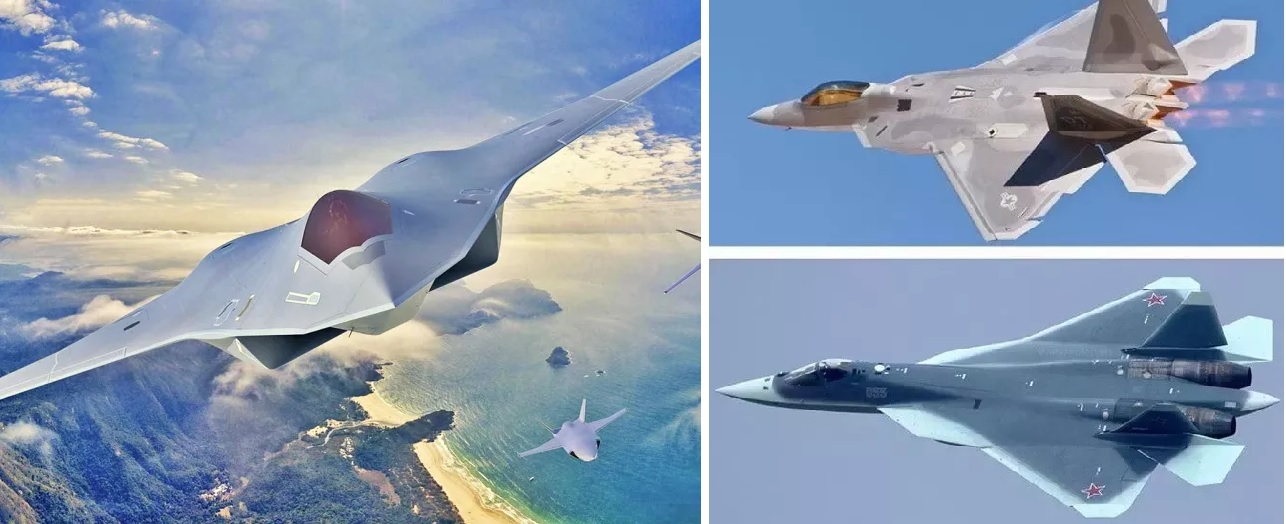 Key Differences Between 5th vs. 6th Generation Fighter Jets
Key Differences Between 5th vs. 6th Generation Fighter Jets
-
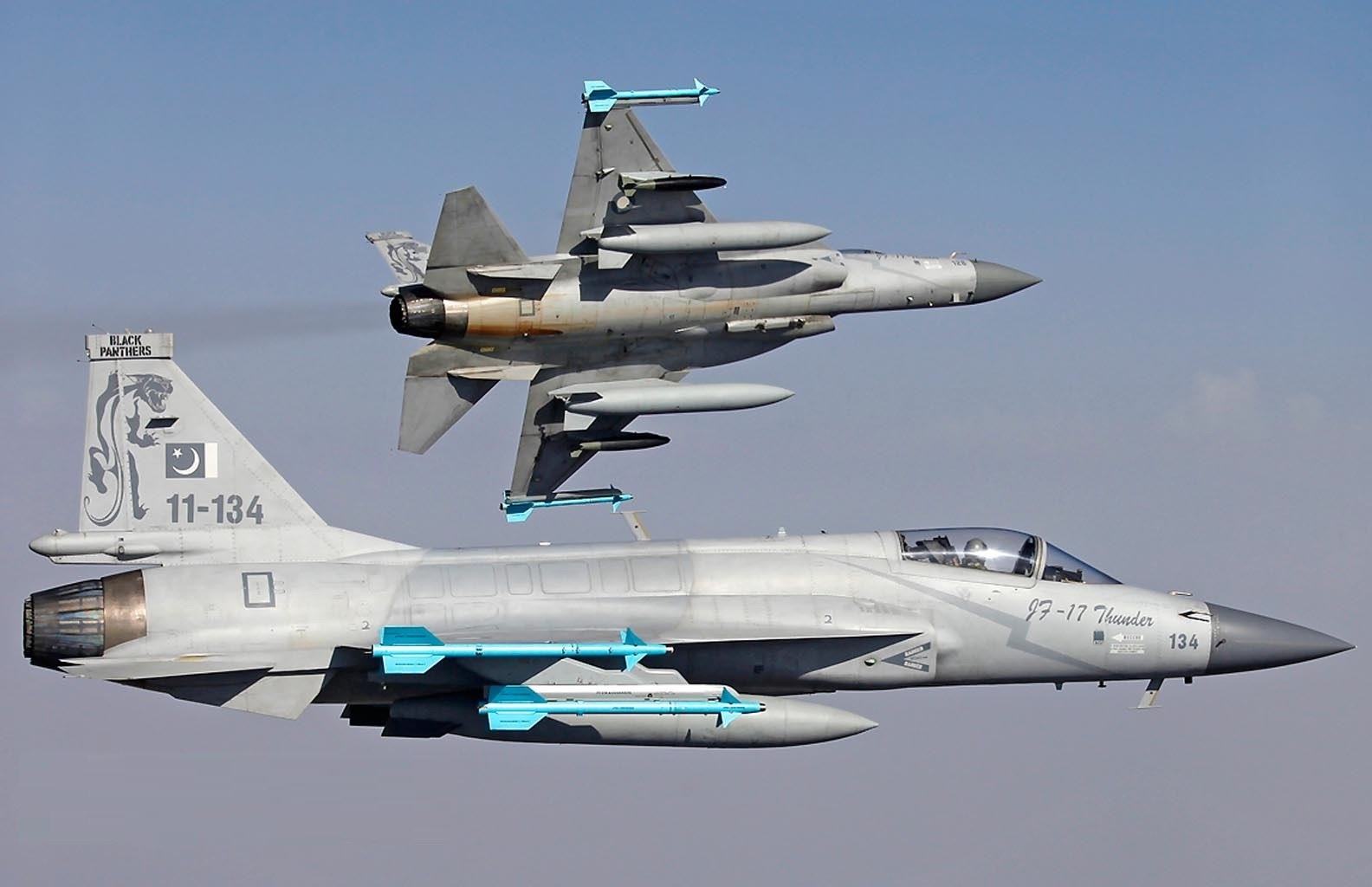 Pakistan Air Force to Unveil Stealth-Enhanced JF-17 Block 4 Fighter Jet by 2028
Pakistan Air Force to Unveil Stealth-Enhanced JF-17 Block 4 Fighter Jet by 2028
-
 Pakistan Announces 15% Increase in Defence Budget for 2024-25 Amid Economic Crisis
Pakistan Announces 15% Increase in Defence Budget for 2024-25 Amid Economic Crisis
-
 India’s AMCA Engine Decision: Safran vs. Rolls-Royce Final Expected by 2025
India’s AMCA Engine Decision: Safran vs. Rolls-Royce Final Expected by 2025
-
 India's TEDBF Program Takes Shape First Flight by 2028: Aiming for Naval Supremacy with Advanced Stealth and Technology
India's TEDBF Program Takes Shape First Flight by 2028: Aiming for Naval Supremacy with Advanced Stealth and Technology
-
 What Would Happen if the USA Left NATO? A Comprehensive Analysis
What Would Happen if the USA Left NATO? A Comprehensive Analysis
Top Trending in 4 Days
-
 Mass Killings in Sudan: Satellite Images Reveal Atrocities as Civil War Turns into Genocide
Mass Killings in Sudan: Satellite Images Reveal Atrocities as Civil War Turns into Genocide
-
 United States Successfully Conducts Unarmed Test Launch of Minuteman III ICBM from California
United States Successfully Conducts Unarmed Test Launch of Minuteman III ICBM from California
-
 China Unveils the World’s First Thorium-Powered Cargo Ship, Carry up to 14,000 Shipping Containers
China Unveils the World’s First Thorium-Powered Cargo Ship, Carry up to 14,000 Shipping Containers
-
 Blogger Claims Il-76 Cargo Plane Shot Down in Sudan Was Recently Purchased from Kyrgyzstan for $12 Million
Blogger Claims Il-76 Cargo Plane Shot Down in Sudan Was Recently Purchased from Kyrgyzstan for $12 Million
-
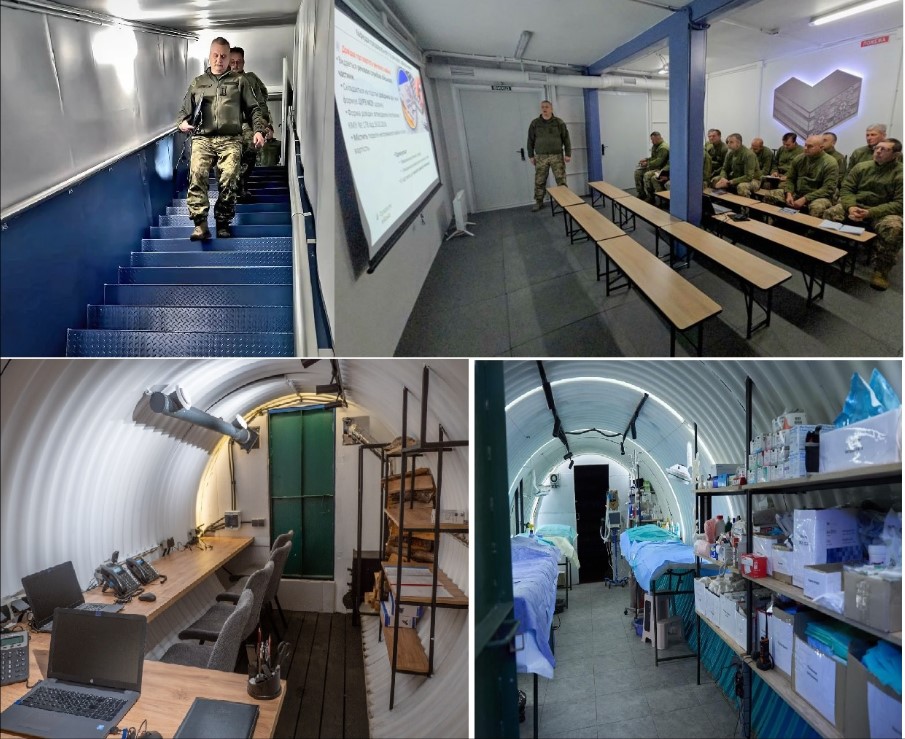 Ukraine Opens First Underground Military Training Hub Built with Metinvest’s Steel Dream Technology
Ukraine Opens First Underground Military Training Hub Built with Metinvest’s Steel Dream Technology
-
 China Begins Trial Production at the World’s First Flying Car Smart Factory in Guangzhou
China Begins Trial Production at the World’s First Flying Car Smart Factory in Guangzhou
-
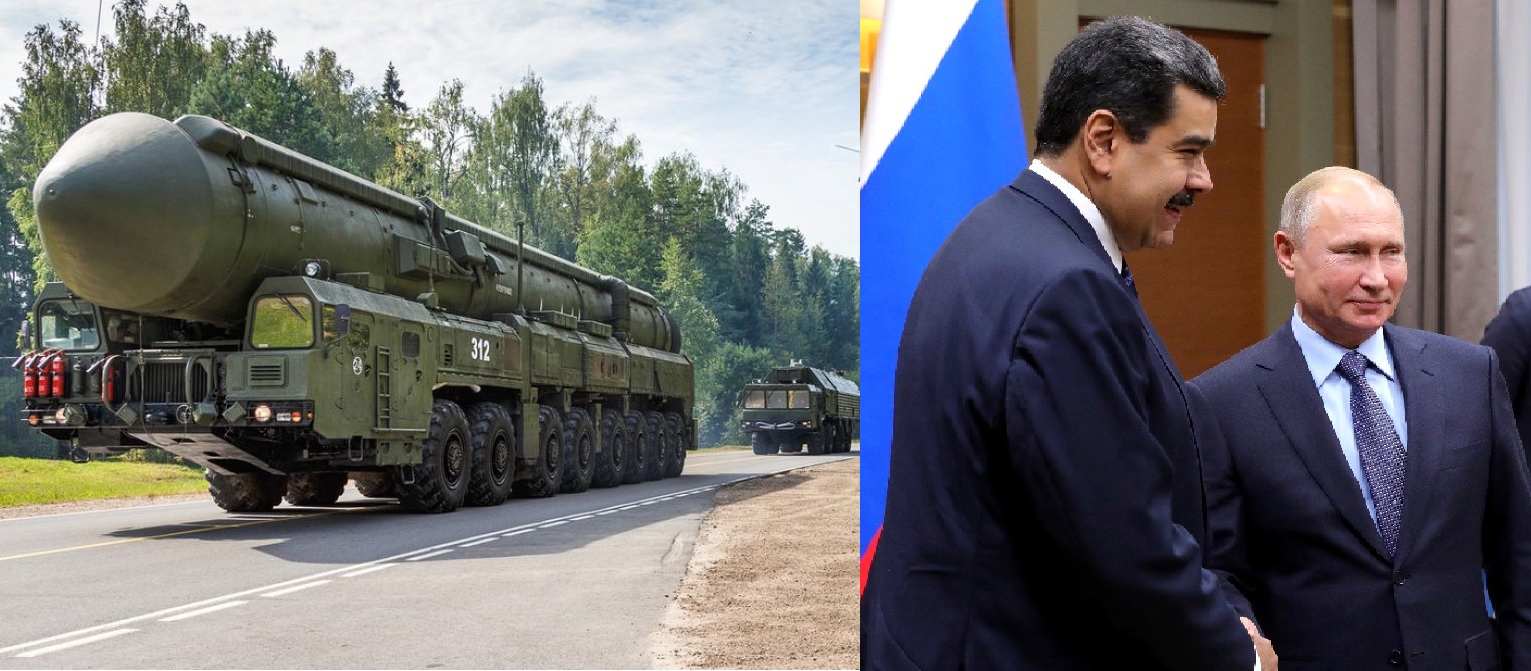 Russia Considers Supplying Venezuela with the “Oreshnik” Missile System — Why It Matters
Russia Considers Supplying Venezuela with the “Oreshnik” Missile System — Why It Matters
-
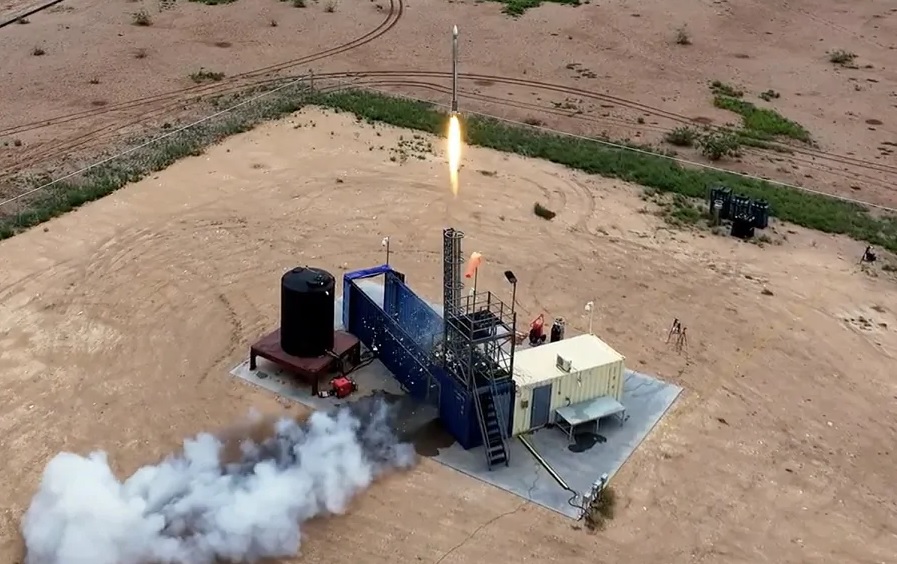 Hanwha Defense USA Invests in Firehawk Aerospace to Accelerate 3D-Printed Rocket Motor Production
Hanwha Defense USA Invests in Firehawk Aerospace to Accelerate 3D-Printed Rocket Motor Production









